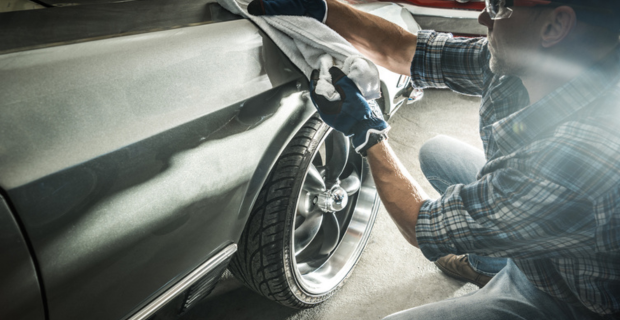Date Published: 2024/02/15
Read Time: mins
Checklist for getting my classic car ready for the new season

The arrival of spring also signals warmer weather for car shows and cruising in your classic car. Whether you stored or drove your car all winter, now’s the ideal time to prepare it for your next adventure. Consider following this checklist for getting my classic car ready for the new season of driving.
Perform a visual inspection
Even if your car was fully protected under a tarp in a climate-controlled environment all winter, it could have suffered damage from insects, animals, dirt, or other sources. Uncover the car carefully and walk around it. Use a flashlight to inspect every nook and cranny. Look for dents, scratches and additional damage. Open the hood and check the engine for chewed wires, fluid leaks, cracked rubber parts, and animal infestations. You can list any issues during your inspection as you plan upcoming repairs.
secure the wiring
Wiring can become brittle in cold weather, rust, or loosen over time. Check all the wiring to ensure it’s intact and secure.
clean the fuel system
Inspect all the fuel line components. Replace any hoses or connections showing corrosion, leaks, or dry rot. Test the throttle linkage to ensure it moves freely. Before you fill the car with fresh fuel, consider cleaning the carburettor or throttle line, too.
Refresh the radiator
The radiator and attached rubber cooling hoses could crack or swell. Replace any worn components to prevent future leaks.
Check the brakes
Spring is perfect for your car’s regular six-month or 20,000 km brake checkup. Inspect the lines, hoses, callipers, and cylinders. You can also push the brake pedal to feel if the brakes are spongy or stiff. If you notice anything unusual, schedule an appointment with a trusted mechanic.
Recharge the battery
Clean and charge the car’s battery before your first spring ride. While the car is off, you can clean the terminals with baking soda and water. Then, check and secure the connections. Finally, charge the battery or replace it if necessary.
Measure fluids
Fill the oil, antifreeze, transmission, brake, coolant, and windshield wiper fluids. But first, inspect the fluids. Verify the fluids are the proper colour and viscosity. For example, the oil should resemble golden honey. If the fluids appear discoloured, cloudy or gritty, drain and replace them with fresh fluids. Ensure the reservoirs are intact and free from holes, buckles, cracks, and wear.
Test belts and hoses
Inspect every belt and hose for wear, such as cracks or dry rot. Then, adjust the belt tension, tighten clamps, and replace damaged parts.
Replace the air filters
A clean air filter can remove dust and help your classic car operate more efficiently. Replacing the air filter could also prolong the engine’s life.
Test the lights
Your classic car probably has headlights, brake lights, turn signals, and interior lights. Turn on each of these lights and make sure they work correctly. If necessary, replace any burnt-out bulbs and clean foggy lenses.
Switch the tires
Inspect your classic car’s tires to ensure they’re ready to grip the pavement every time you hit the road. Replace any tires that show signs of rot, punctures, cracks, bulges, or uneven wear, including inadequate tread. Also, fill the tires with adequate pressure according to your car’s manufacturer’s recommendations. And you may want to verify that the suspension and steering components work properly.
Examine the windshield
Be sure you can see clearly through the windshield. In addition to looking for cracks, chips or dings, test the wipers. Schedule any necessary glass or wiper replacement.
Start your car
After inspecting all the parts of your car, open the garage door and turn on the car. Let it run for at least 15 minutes and notice any unusual sounds or odours. When you turn off the car, recheck the hoses, lines and fluid levels. Make the necessary adjustments or repairs to ensure everything is operating properly.
Wash everything
To remove accumulated dust, dirt and grime, wash the interior and exterior of your classic car, including the engine and vanity licence plate. Use soft cloths and a mild detergent to protect the finish. A layer of wax further protects your car as you drive.
Take a test drive
Drive at least a few miles to ensure your vehicle is ready for everyday use. You can listen for squeaking or grinding, check fluid levels and make a list of any required repairs.
Verify insurance coverage
Classic car insurance protects your investment. Contact Orbit Insurance Services for a classic car insurance quote. Likewise, discuss coverage options and the budget as you finalise getting my classic car ready for a new season.
Sources
https://www.orbitinsuranceservices.ca/collector-car-insurance
https://www.orbitinsuranceservices.ca/collector-car-insurance